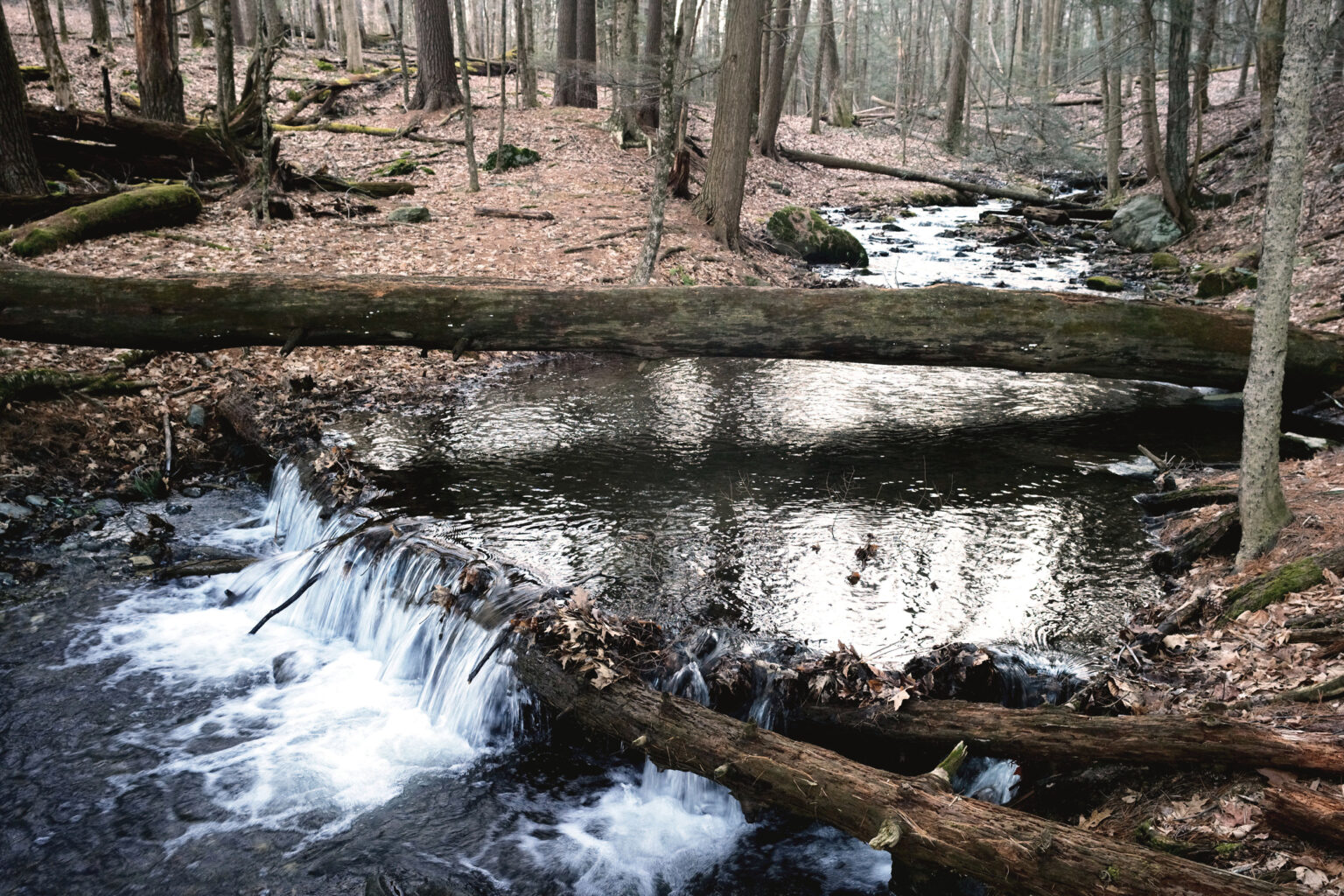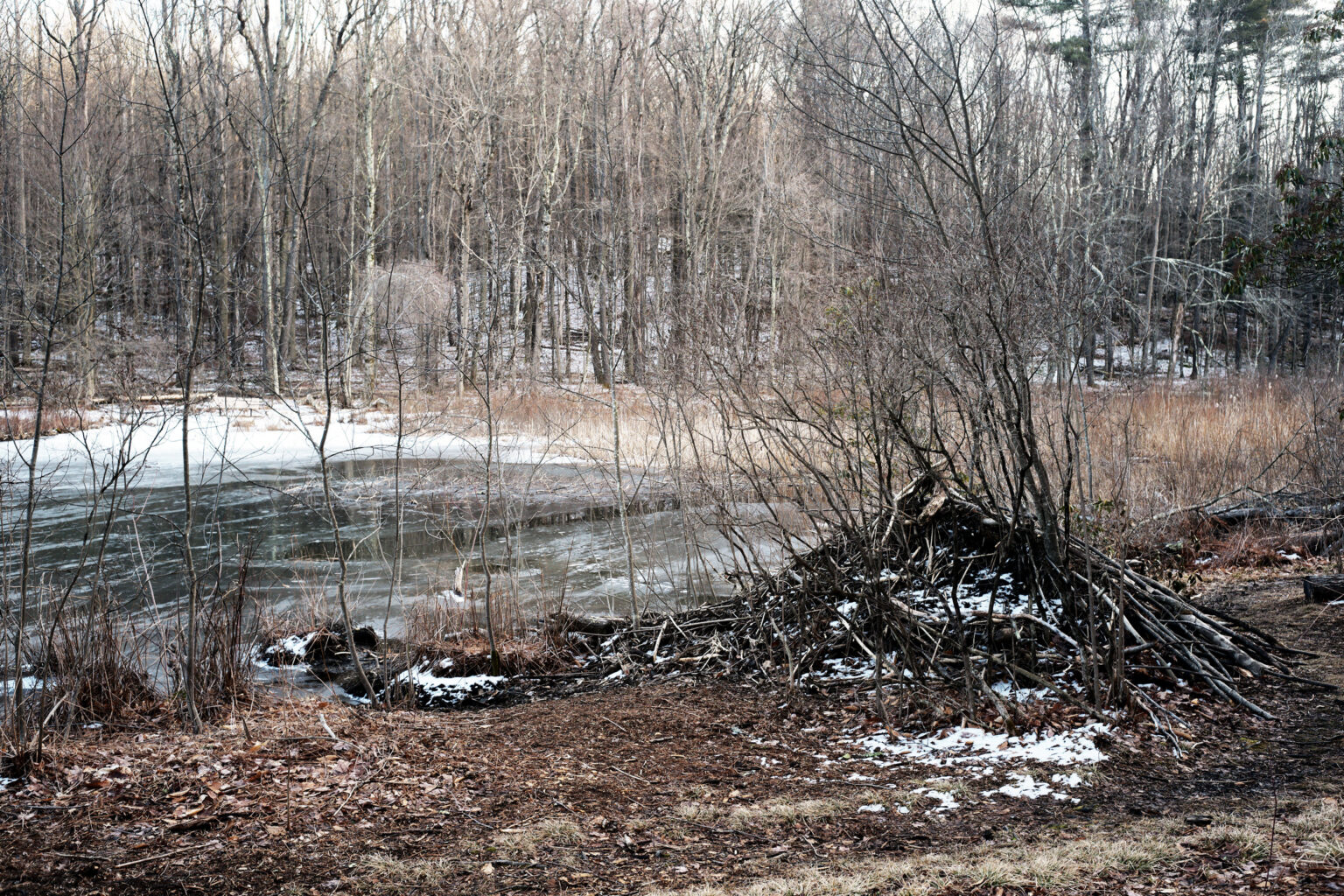I told you there was a glut of good beaver news lately. This was published last week by David Sassoon at Inside Climate News. I know you’ll appreciate it.
A Walk in the Woods With My Brain on Fire: The End of Winter
 To settled humans, beavers seem single-mindedly destructive and worthy of eradication. It’s fairer and more accurate to regard them as benevolent builders of public housing, displaced from their ancestral homes. They don’t pollute and destroy ecosystems like humans do, they enlarge and diversify them. They turn small streams into water parks where insects and reptiles, migrating birds and other creatures of the forest come to drink and feed. As their ponds fill up with silt, beavers move upstream to build new dams, and so in time create fertile meadows and aggrade entire valleys, enrich soils and hydrate the surrounding earth and the aquifers below.
To settled humans, beavers seem single-mindedly destructive and worthy of eradication. It’s fairer and more accurate to regard them as benevolent builders of public housing, displaced from their ancestral homes. They don’t pollute and destroy ecosystems like humans do, they enlarge and diversify them. They turn small streams into water parks where insects and reptiles, migrating birds and other creatures of the forest come to drink and feed. As their ponds fill up with silt, beavers move upstream to build new dams, and so in time create fertile meadows and aggrade entire valleys, enrich soils and hydrate the surrounding earth and the aquifers below.
That’s a pretty nice overview of what beavers do. You are starting to make me want to read this closer.
 Beavers learned their work of generous landscape design over more than 30 million years, the evolutionary record says. They are well-schooled old hands. All tooth and tail wrapped in soft fur and glandular scent, they are fat, slow and easy prey. Only they’re also intelligent. They build their lodges with entrances underwater. No castle ever had a better moat.
Beavers learned their work of generous landscape design over more than 30 million years, the evolutionary record says. They are well-schooled old hands. All tooth and tail wrapped in soft fur and glandular scent, they are fat, slow and easy prey. Only they’re also intelligent. They build their lodges with entrances underwater. No castle ever had a better moat.
Looping around their pond, I came upon their lodge. Actually, there were two in close proximity. They were almost five feet tall, conical, sturdy domes of packed mud and cut sticks, impervious to assault. They carried evidence of a self-awareness that took my breath away.
I could hear the beavers at home. From inside came the rapid, repetitive sound of practiced gnawing on wood. It was approaching dusk, so perhaps they were having breakfast before the start of the night shift they all work. Soon enough one of them took to the water, the thin ice at the entrance suddenly undulating. The beaver surfaced about fifteen yards out, snout and fur-body in an easy glide atop the open water, tail submerged. Eventually the beaver swam over to a dam’s embankment and waddled out of the water.
Uh oh. Be very careful. Watching beavers is a dangerous pastime. You might get hooked. Trust me I know.
It was enormous! It looked to weigh seventy-five pounds—like a big dog or a small bear. No, it was a beaver. Likely one of the aging monogamous pair that anchor this colony. He or she—who can tell?—began gnawing the bark off a stick, paying me no mind, emanating serenity and belonging. I watched and listened for a long time, mouth agape. A beaver.
Sauntering toward the other lodge, I snapped a stick underfoot and heard a big splash. Damnation! I had spooked another beaver on the bank not ten feet away. He surfaced his snout at mid-pond out of a hole in the ice and regarded me with suspicion. He disappeared and surfaced, disappeared again and surfaced, and still finding me there despite the peek-a-boos, he plunged once more, gaining maximum leverage to smack his tail flat on the water, loud as a rifle shot. The sound reverberating across the valley gave warning: predator at large.
The Haudenosaunee—the Iroquois nations—were the first to heavily arm themselves with guns, powder and shot obtained from the Dutch settlers of New Netherland. For a single weapon they were willing to offer as many as twenty beaver pelts, which when sold for cash in Europe returned the colonists a tenfold profit. The handsome gain let them overlook the danger of selling weapons to potential enemies; the Iroquois delivered as many pelts as they could. Armed with superior weaponry they soon gained supremacy over rival native nations.
The furs-for-firearms trade was a financial win-win. Beavers were the losers, but the bloody underside of the transaction came to stain all involved. The military success of the Iroquois ignited an arms race among native peoples that spread across the continent for the next two hundred years. Their cultures would be irrevocably transformed, as the frontier character of the American experiment simultaneously took shape around the gun.
Wow. That’s a pretty powerful persuasion. Dimly better than alcohol which trappers in the west did routinely. I don’t know, is it better to be drunk or murderous? You gotta pick one because all those beavers aren’t going to skin themselves.
The North American beaver was an early victim of an extractive process that would come to reach every corner of the globe. It twinned ruthless environmental destruction with warring in the name of free trade and prosperity—a process that continues today. Castor canadensis has bounced back from near extinction. They say 6 to 12 million individuals are now leading monogamous, home-building lives again. A handful of them are here.
I have often had a similar thought. If we knew then how devastating it would be for water and wildlife and wildfires and aquifers to wipe out the entire beaver population would we have stopped ourselves?
And I eventually answer myself “no of course not” It’s just like the race for fossil fuels. No matter who it hurts or how much it hurts when we chase the dragon.
Beavers were no exception. They just lucked out when silk hats got more popular.






































